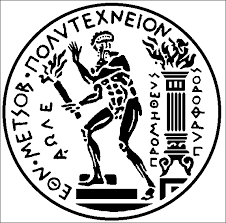Εθνικό Μετσόβιο Πολυτεχνείο--Μεταπτυχιακή Εργασία. Διεπιστημονικό-Διατμηματικό Πρόγραμμα Μεταπτυχιακών Σπουδών (Δ.Π.Μ.Σ.) “Υπολογιστική Μηχανική”
(EL)
151 σ.
(EL)
Η παρούσα εργασία εξετάζει την αποτελεσματικότητα τόσο των καινοτόμων όσο και των παραδοσιακών πειραματικών τεχνικών στον τομέα της εμβιομηχανικής των οστών, με την κατασκευή των αντίστοιχων υπολογιστικών μοντέλων. Θα χρησιμοποιηθούν υπολογιστικές μέθοδοι για τη σύγκριση και την αξιολόγηση διαφορετικών πειραματικών τεχνικών, που αποσκοπούν στον προσδιορισμό των μηχανικών ιδιοτήτων των οστών, με βασικό στόχο την ανάδειξη των προτερημάτων και των αδυναμιών της εκάστοτε τεχνικής.
(EL)
Λήδα Δ. Κανάρη
(EL)
The current thesis studies the effectiveness of innovative but also traditional
experimental techniques in the field of bone biomechanics, through
the construction of computational models. Computational methods will be
used for the comparison and the evaluation of different experimental methods,
which are used for the determination of bone mechanical properties, in
order to illustrate the benefits and the diffculties of each method.
The science of biomechanics is becoming more and more part of the clinical
practice, especially in the field of orthopaedics. The introduction of modern
techniques, contributes to the improvement of the diagnostic methods as
well as of the therapeutic procedure, in order to eliminate the postoperative
complications and the possibility of a failure of the clinical treatment. The
development of more effective and radical treatment techniques leads to the
decrease of the recovery time, when the patience should stay immobilized,
with multiple benefits.
However, the major problem of the above convenient approach, is the
imposed restrictions of experimental biomechanical techniques, which render
the application of those techniques in clinical practice unattainable. Those
restrictions concern, first of all, the weakness of utilizing the appropriate
specimen, for example human bones, in order to export results corresponding
to reality rather than to insufficient approaches. The major problem of
experimental methods is introduced by the inability of their direct application
in patients during the clinical procedure, due to the destruction of
experimental specimen and the lack of reproducibility of the procedure.
The computational methods attempt to solve the above weaknesses of the
experimental biomechanical methods, by substituting the parts of the procedure,
which cannot be transferred in the clinical practice. The computational
simulations use the information of the experimental data, in order to extract
important results concerning the bone's mechanical properties and their response
to certain loadings. Those results would require the application of
biomechanical techniques in patients in order to be collected experimentally.
In the current thesis, a femur rabbit bone is tested under different loading
procedures. The first step of the procedure, contains the use of computed
tomography in order to receive accurate data for the bone geometry. Those
information will be used for the construction of the three dimensional model
of the femur bone. The computational model will be compared with experimental
data for the confirmation of its accuracy.
In the next step, the created model will be subjected in computational
tests that simulate the experimental procedure. The study contains three and
four point bending tests applied in both free and embedded bone specimen.
The computational results will be compared with respective experimental
results and will be used for the evaluation of each experimental technique.
The purpose of the study is to illustrate the advantages of each test in different
cases, in order to contribute to the optimization of the experimental
techniques for the optimum use of the resources.
(EN)
 National Technical University of Athens
National Technical University of Athens

